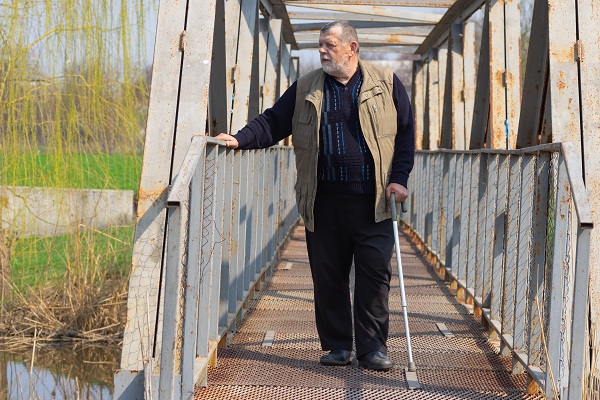What is peripheral artery disease and who’s at risk?

Peripheral artery disease (PAD) is the leading cause of preventable amputations, but vascular surgeons say the majority of Americans are unaware of the disease. Surgeons like Sheena Harris, MD, are trying to change that.
“It’s a condition that affects arteries all over the body,” said Dr. Harris. “It’s affected by risk factors like genetic background, age, smoking, high blood pressure — similar to things that affect coronary artery disease.”
Dr. Harris said PAD refers to arteries outside of the brain and the heart.
Peripheral artery disease causes
“It is caused by buildup in the arterial wall due to factors like high cholesterol orhigh blood pressure,” Dr. Harris said. “This usually leads to a buildup of plaque that ends up becoming a mass or lesion within the artery that can reduce blood flow which results in less blood flow to your extremities — most commonly the lower extremities, but this can also affect the upper extremities.”
Mild cases of PAD often cause pain in the calf when walking. This is called claudication, and vascular surgeons work with patients with claudication to reverse their symptoms with lifestyle interventions such as smoking cessation and exercise.
However, if the pain becomes constant or if wounds develop, that may indicate a level of disease that cannot be reversed without surgical intervention. In this situation, the vascular surgeon will work with the patient to determine the best surgical options available.
PAD red flags
“Something that looks benign, like a wound on the toe that hasn’t healed in two weeks, could signal a lack of blood flow,” said Dr. Harris.
Other patients see symptoms in their arms, hands or fingers. This could look like finger wounds that don’t heal or pain when using your arm.
The vascular surgeon said there are many steps patients can take to reduce the risk of PAD.
How to reduce PAD risk
“Eating well, eating foods low in fat and cholesterol, having a varied diet with foods from all of the food groups is very important, keeping with a regular physical regimen,” said Dr. Harris. “At the very least, walking 30 minutes a day, three days a week.”
At Salem Health Vascular Surgery, patients can work with a nutritionist or a counselor for smoking cessation. Surgeons also refer patients to a regimented walking program with a supervised trainer as a step in their PAD treatment.
“For patients with claudication, goal is to double your walking distance without pain in six weeks, and almost every patient hits that goal,” said Dr. Harris.
Overall, it’s a collaborative process between patients and providers, she said.
When is surgery needed?
“Endovascular surgery is where we perform procedures inside the vessels using wires, catheters, balloons and stent placement for arteries. We’re usually able to relieve pain that day, and then they’re able to go home,” said Dr. Harris. “We also have a lot of experience with traditional or 'open' surgery, which could mean removing the plaque manually, or bypasses, which is rerouting the blood flow around a blocked artery.”
Ultimately, there are many ways vascular surgeons can help patients with PAD.
“Vascular surgeons have all these different things in our tool belt,” she said. “We’re able to really customize treatment plans to the patient.”